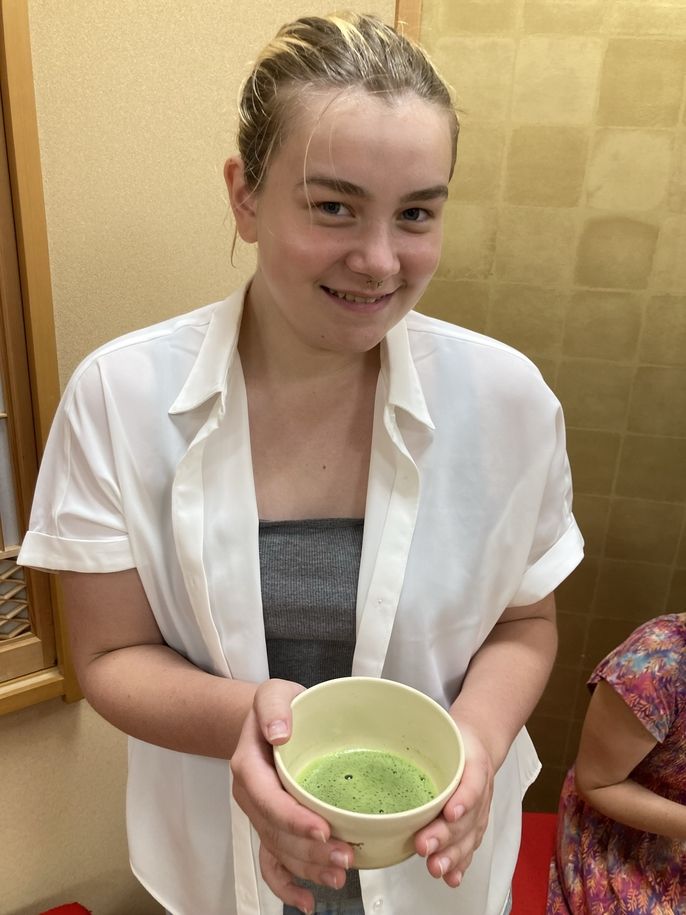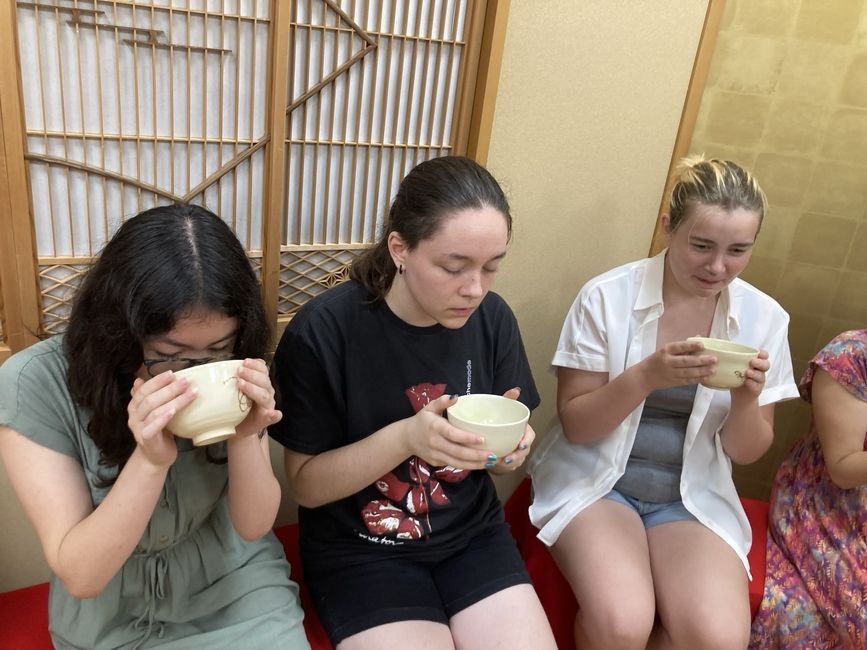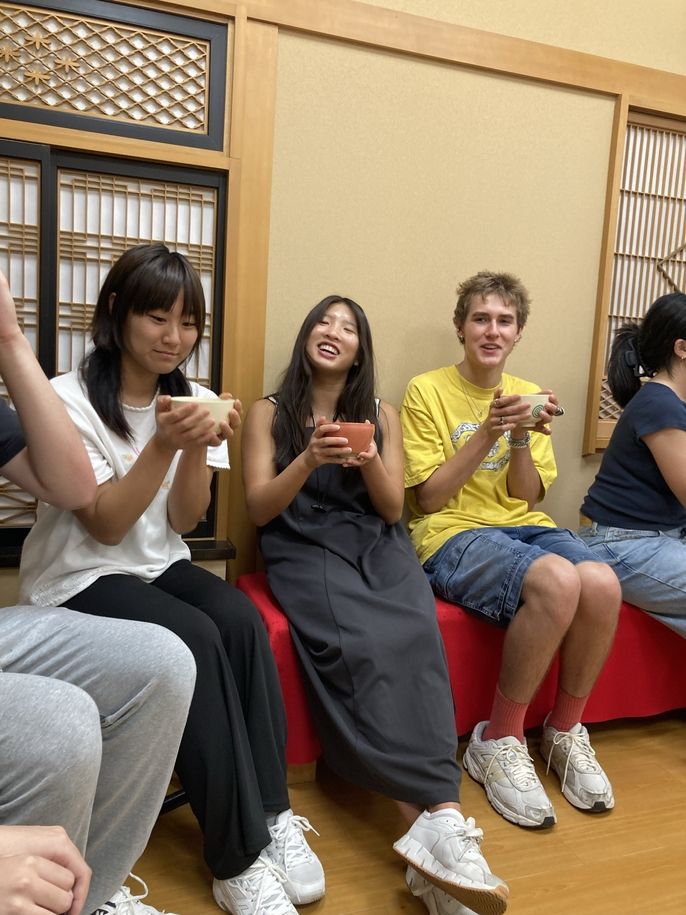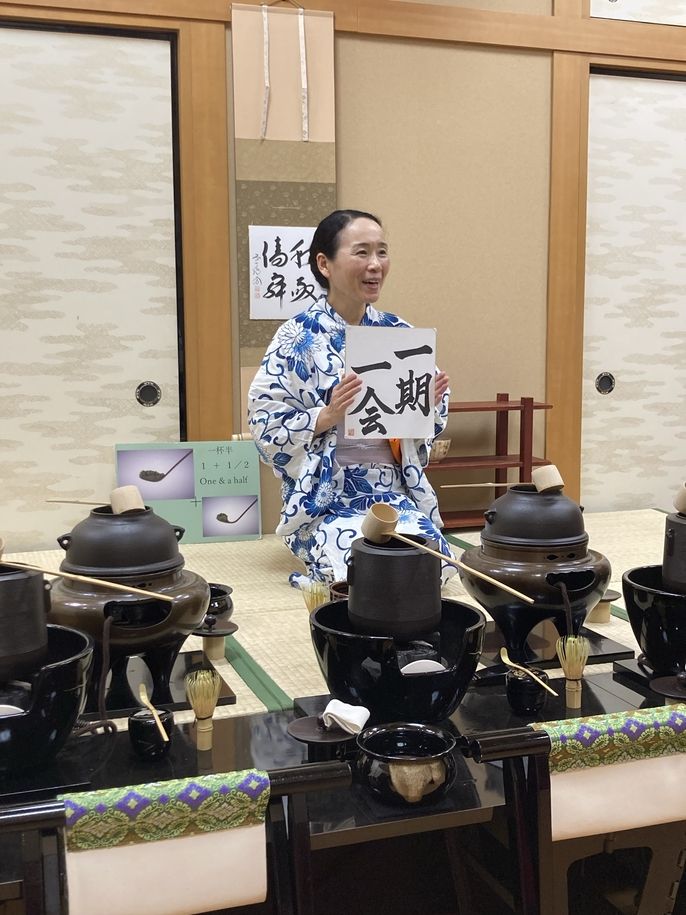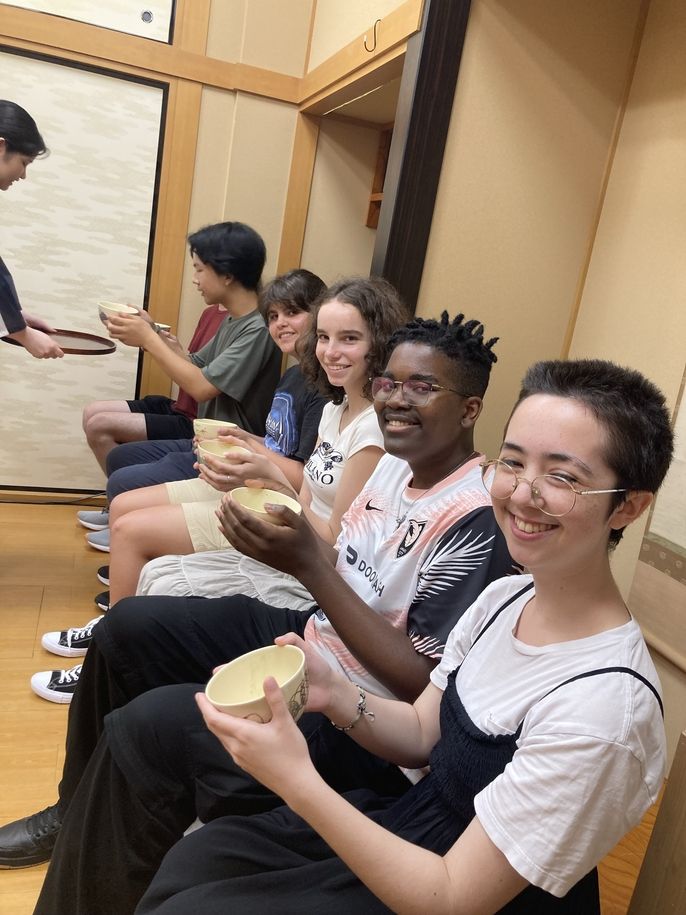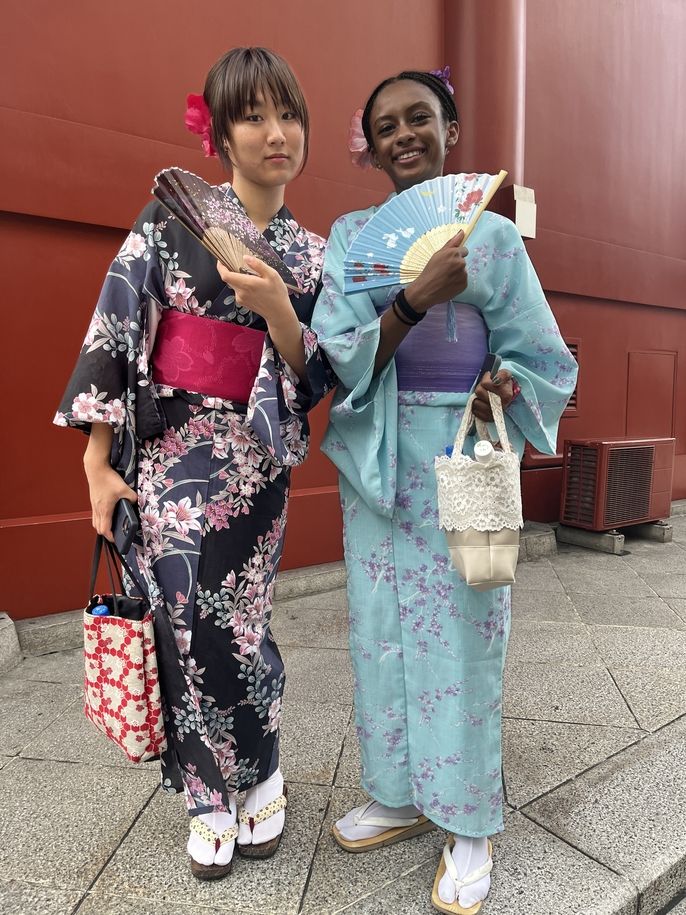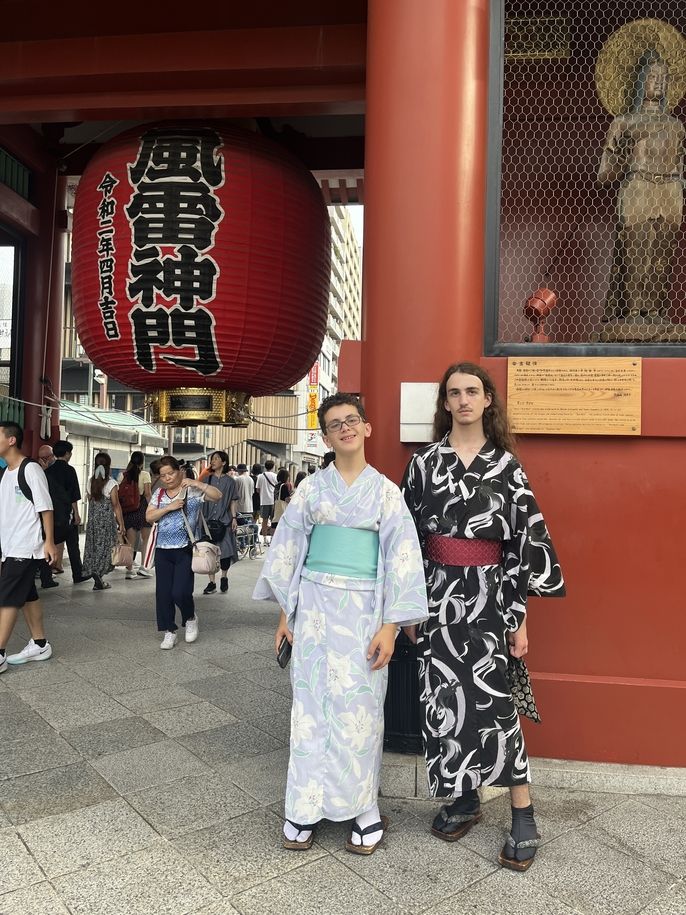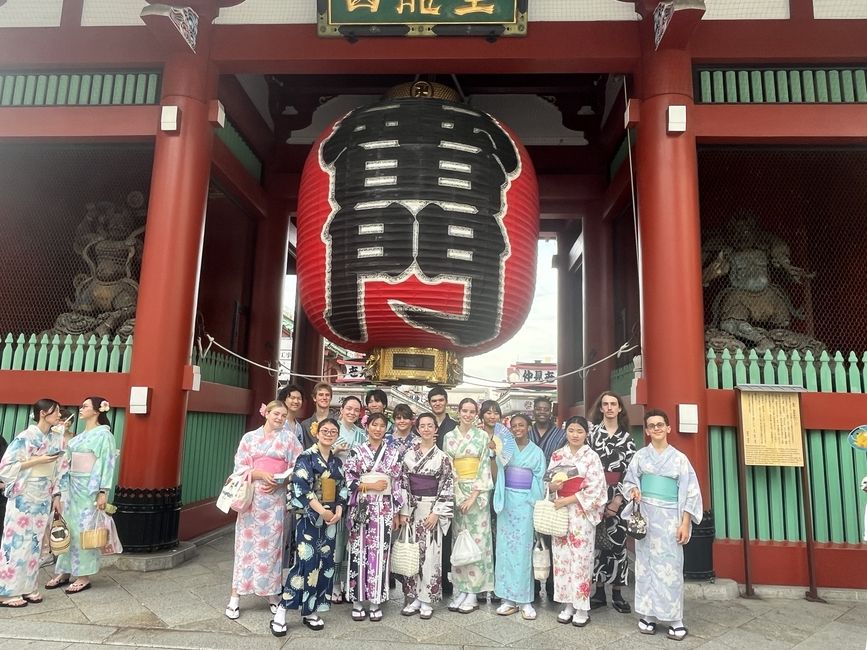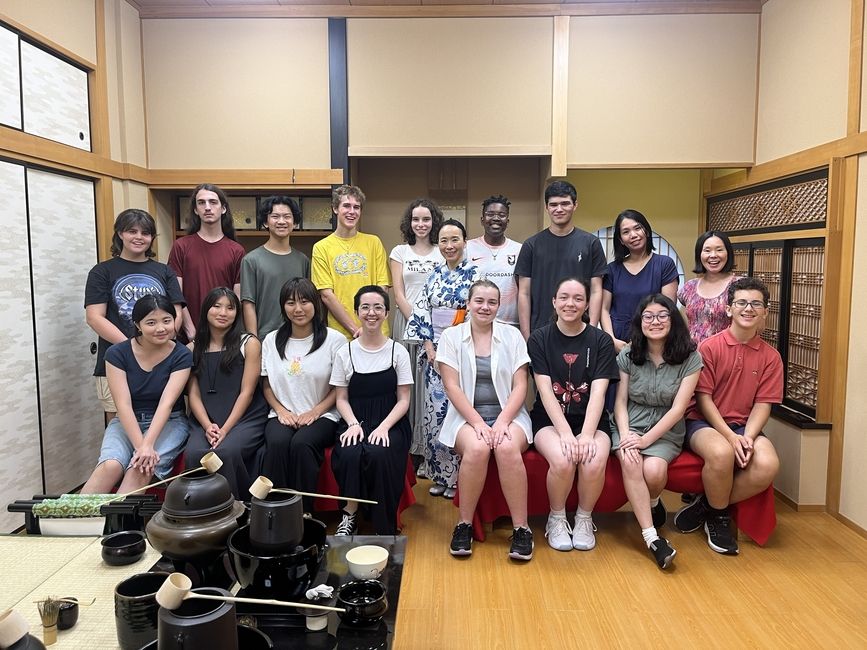A Day in Asakusa - Experiencing Tradition in Modern Japan
When you think of Tokyo, you might imagine the bustling streets of Shibuya, the cutting-edge technology of Akihabara, or the towering skyscrapers of Shinjuku. However, nestled within this modern metropolis lies Asakusa, a neighborhood offering a window into Japan's rich cultural heritage. As part of our High School Summer Abroad program, our students recently enjoyed a day immersed in traditional Japanese culture by visiting Asakusa and the iconic Sensō-ji Temple, dressed in beautiful yukatas. We also visited Idaiya Komagata Studio for a tea ceremony.
The Beauty of Yukata and Exploring Sensō-ji Temple
Before setting out to explore Asakusa, our students gathered to don traditional Japanese summer wear, the yukata. These light, cotton kimonos are typically worn during summer festivals. The students were excited to choose from a variety of vibrant colors and patterns, each one more stunning than the last. Dressing in yukata added a special touch to the day, allowing the students to truly feel a part of the cultural experience.
With everyone dressed in their yukatas, we made our way to Sensō-ji, Tokyo’s oldest and most significant Buddhist temple. As we approached the Kaminarimon, or "Thunder Gate," the students were in awe of the enormous red lantern that hangs prominently at the entrance. Despite the heat and crowds, all of the students enjoyed the special moment in Asakusa.
The Japanese Tea Ceremony: A Moment of Tranquility
On another day, we had a great experience at Idaiya Komagata Studio for the tea ceremony. The Japanese tea ceremony, or *chanoyu*, is a serene ritual that celebrates simplicity, mindfulness, and respect. Rooted in Zen Buddhism, it’s more than just drinking tea; it’s an art form that focuses on harmony (*wa*), respect (*kei*), purity (*sei*), and tranquility (*jaku*).
In a tranquil setting, the host meticulously prepares matcha (powdered green tea) while guests appreciate the process. The ceremony involves graceful movements and thoughtful interactions, from cleansing hands to savoring the tea in a mindful manner.
All of the students enjoyed the tea and *wagashi* (traditional sweets). It was a truly great experience for us!
Related Posts

How I Made $2,000 Referring Other Students on Summer Abroad Programs
Read this blog from one of our past Global Ambassadors and find out how she was able to earn rewards with CIEE and encourage other students to study abroad!
Host Family Weekend
On the final weekend in Japan, students spent time with their host family. This weekend, host families prepared activities for students. Some students learned how to make Japanese food from... keep reading
Discovering Aizome- Japanese Indigo Dyeing
Tokyo Language and Culture students experienced a lesson in traditional Japanese indigo dyeing at Some no Sato, a dyeing shop that was established over 100 years ago in Ochiai, Shinjuku... keep reading
